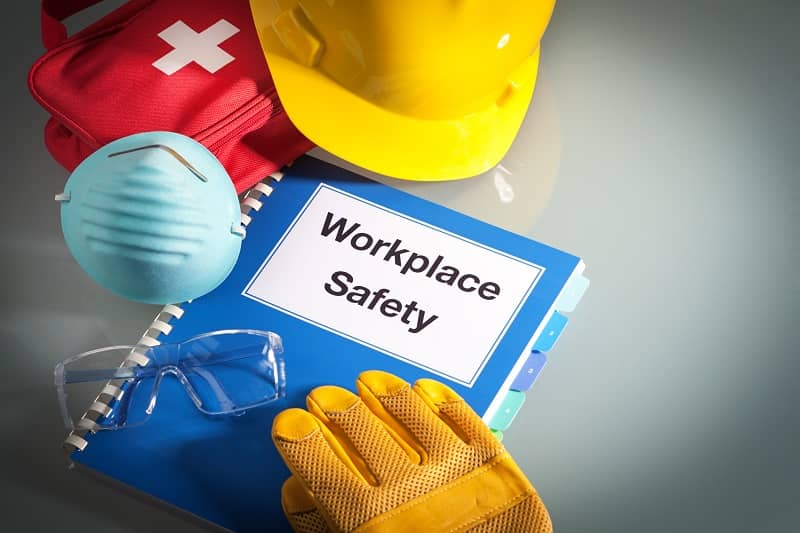Safety training is an essential part of every employer’s safety and health program to protect workers from injury and illness, and ensure workers have the required skills and knowledge to safely do their work. The resulting benefits from effective safety training include fewer injuries and illnesses, better morale, lower insurance premiums and more.
Your employees have the right to a safe work environment, safe work processes and procedures, and safe tools and equipment. Although safety training is not one-size-fits-all—what your specific training program looks like will heavily depend on company operations, hazards, and risks—there are six training topics that apply to most businesses.
6 workplace safety training topics that pertain to most businesses
1. Slip, trip, and fall hazards. These include wet floors, snow or ice, electrical cords or pipes at floor level, and fall hazards such as roof work. You should conduct slip, trip and fall hazard awareness training, including procedures to prevent slips, trips and falls in the workplace.
2. Chemical safety. For employees using cleaners, solvents, glue, adhesives, spray paint, and lubricants, it’s important to train them to accurately read chemical labels and safety warning for how to safely use and/or mix chemicals.
3. First aid. Ensure employees know where first-aid supplies and equipment are located and how to render first-aid to themselves of others as needed.
4. Personal protective equipment (PPE). Adequately and regularly train employees on when and how to wear safety glasses, gloves, safety shoes, protective clothing, earplugs, hard hats, respirators, face shields, and other protective equipment to prevent on-the-job injuries.
5. Emergency action plan. This training covers emergency procedures when a fire, hazardous spill, severe weather situation, or medical emergency occur. If your business employs fewer than 10 employees, your plan may be informal, but you must still communicate what to do in an emergency.
6. Portable fire extinguishers. Train employees to use them in case of a small fire, including the types of fire extinguishers, what each type is used for, and how to properly extinguish a fire.
6 tips for conducting workplace safety training
Once you have determined what topics you should include in your employee safety training program, based on regulatory requirements and best practices, here six strategies for planning and conducting health and safety training:
1. Simplify. Safety topics can be technical in nature and audiences can vary in native language and educational background. Whether it’s on-the-job training or more formal training, use simple language, visuals and repeat key concepts more than once.
2. Document. Document what was covered, the date, the trainer, and the names of participants. This will boost your recordkeeping efforts and provide historical information that can be handy when employees turn over or are promoted.
3. Schedule. Establish a regular cadence for safety training. Training is an opportunity to reinforce the message to your employees that safety is a core value of your business. If you want safe work practices to become embedded in your workplace culture, make safety a regular topic of conversation—whether it is included in a daily pre-shift meeting, scheduled into an online training schedule, or included as part of a monthly team meeting.
4. Demonstrate. Include safety training in on-the-job training when demonstrating a new task, skill, or process to employees. Too often, when showing employees how to perform a task, trainers overlook safety—either because they assume safety is commonsense or they haven’t considered what could go wrong. Take the opportunity to discuss potential hazards and reinforce safety skills needed to perform tasks injury-free.
5. Integrate. Incorporate safety training into new employee onboarding, including basics like emergency procedures and PPE requirements as well as task specific safety precautions and instructions. Make onboarding training job-specific so new hires can apply what they learn to their daily work.
6. Audit. Training falls short with no follow up. When visiting work areas or working with employees on-the-job, observe whether the concepts presented in the training are being carried out and have become company norms. If not, retrain until the information is consistently practiced.
A healthy and safe workplace leads to happier and more productive employees, ultimately benefiting your business. Communicate with us at Paul Donas, LLC about employee benefits plan by calling us at (973) 509-7473 today!


